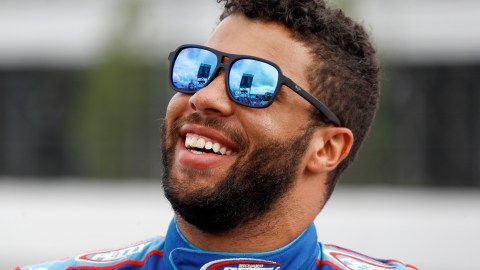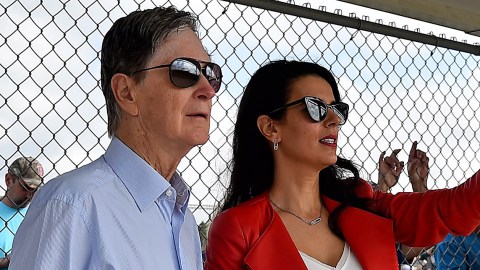 If voting for the NBA’s Rookie of the Year award took place right now, it would be sort of weird since it is only three weeks into the season. But, heck, since All-Star voting has started already, no award discussion is really off limits.
If voting for the NBA’s Rookie of the Year award took place right now, it would be sort of weird since it is only three weeks into the season. But, heck, since All-Star voting has started already, no award discussion is really off limits.
Anyway, if voting for the top rookie happened today, there is a good chance Portland Trail Blazers point guard Damian Lillard would beat out New Orleans Hornets center Anthony Davis for the honor. Through 10 games, Lillard averaged 19.0 points and 6.1 assists per game for the Blazers, who look like a potential playoff team. Six games into his campaign, Davis’ numbers of 16.0 points, 8.3 rebounds and 2.2 blocks per game were impressive as well, but his Hornets looked like the last-place squad they were, and playing the point for a playoff contender is one of the toughest jobs in the NBA for anyone, rookie or otherwise.
So it makes sense that most of the conversation regarding the Blazers thus far centers on their dynamic young point man and their up-tempo offense. They are ninth in the NBA in points per game and Lillard runs the pick-and-pop with LaMarcus Aldridge as well as any duo in the league. They regularly top 100 points a game and all five of their losses came to teams that made the playoffs last season, so much of the attention given to Lillard and Portland’s new identity is warranted.
Quick pace and perimeter-based offense can only go so far, though, as we have mentioned before. The Blazers are another example that seemingly impressive offensive statistics are fool’s gold. If coach Terry Stotts plans to make the Blazers a real player in the Western Conference playoff picture and not just an energetic team that is fun to watch, he needs to re-emphasize the post game that made Aldridge an All-Star last season and a borderline candidate for several years before that.
The biggest factor in Aldridge’s transformation from just a nice complementary player to a franchise power forward was his post game. Early in his professional career, Aldridge was too content to settle for jump shots. As a result, he was a very good, but not great, player. He possessed a versatile game that was handcuffed into being one-dimensional, either because of then-coach Nate McMillan‘s system at the time or his own unwillingness to bang down low.
Somewhere around year No. 3, though, Aldridge got it. His shot attempts at the rim jumped by almost three per game and reached a career high of 6.1 per game in 2011, falling slightly to 5.1 per game last season. His looks from 10 to 15 feet held relatively steady around three per game, while he continued to take between five and six long two-point jump shots per game. The emphasis was obvious. Even though Aldridge possessed an excellent jumper for a 6-foot-11 forward, the Blazers made a conscious effort to get him higher-percentage looks.
All of that has disappeared this season. The sample size is small, but the change is jarring. Aldridge’s shots at the rim have plummeted to 3.3 per game, his lowest since his rookie year, while his number of shots from 16 to 23 feet has ballooned to 10.2 per game. Nobody in the league takes more long twos — not noted midrange gunners like Josh Smith or Michael Beasley, and not even guys like Richard Hamilton and Luol Deng, who actually have a reputation for making such shots. To put it another way: More than half of the shot attempts taken per game by a near-7-footer come from beyond the free throw line.
Aldridge’s shooting percentage therefore is irrelevant, because no matter how efficient he may be on such shots, he is inevitably less efficient than he would be taking the same number of shots near the hoop. Not surprisingly, the Blazers are less efficient as a result. Scoring 100.4 points per game seems impressive, but relative to their pace (the amount of possessions they get per game) the Blazers’ scoring average is just about where it should be. They are scoring fewer points per 100 possessions than slowdown teams like the Celtics and Nets — in other words, those teams get more out of fewer possessions than the Blazers do.
To compound the problem, no team gets less out of its bench than the Blazers, who also happen to be one of the league’s worst defensive teams. Because the bench and their defense are unlikely to bail them out, it is imperative for the Blazers to be as effective as possible on the offensive end, and they simply are not. That is why the Blazers are only 1-4 when they fail to top 100 points. When the offense is not humming along perfectly, the Blazers are effectively doomed.
While so many people are bemoaning the Lakers’ hiring of Mike D’Antoni because of his ability to artificially inflate offensive statistics, a similar effect has taken hold in Portland. The Blazers look nice on paper and Lillard is a joy to watch, but Aldridge is one of the top three or four power forwards in the game, and so far the Blazers are using him as some sort of midrange sharpshooter.
Hey, if the Blazers’ goal is to pull Aldridge’s defender away from the basket to create more room for Lillard to pad his stats and win Rookie of the Year, more power to them. But if their goal is to, you know, win, Aldridge needs to get his butt on the block and go to work. It might look stodgy and boring, but it will put their best player in the best position to succeed.
Have a question for Ben Watanabe? Send it to him via Twitter at @BenjeeBallgame or send it here.
Photo via Wikimedia Commons/LaMarcus Aldridge



